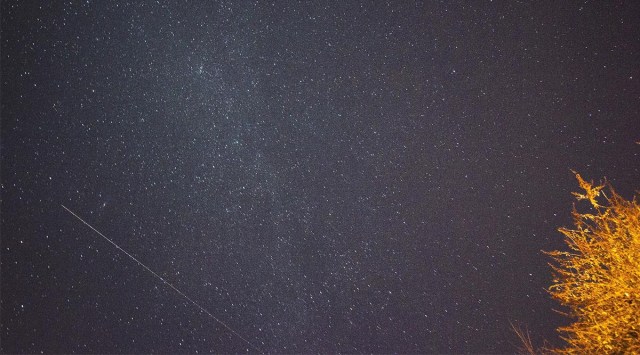Artificial meteor showers could soon be a reality: Report
Tokyo-based ALE plans to launch small satellites that can produce artificial meteor showers.
 The satellites should produce an artificial meteor shower by ejecting small "shooting star" particles from a low-Earth orbit. (Illustrative image credit: zjxte on Pixabay)
The satellites should produce an artificial meteor shower by ejecting small "shooting star" particles from a low-Earth orbit. (Illustrative image credit: zjxte on Pixabay) Meteor showers are beautiful celestial events, peppering the sky with shooting stars. Now, it seems that a Japanese company is set to launch satellites that will trigger an artificial meteor shower.
According to a report by The Independent, Tokyo-based ALE is set to launch the satellite in 2025 and it hopes to give people all over the world “the opportunity to view the world’s first live human-made meteor shower.”
The project is called Sky Canvas and it is designed to collect atmospheric data in the mesosphere, which is the third layer of the atmosphere. The Mesosphere is too low to be observed by satellites and too high for weather balloons or aircraft.
According to a 2019 BBC report, ALE plans to do this by using a pressure-driven system of gas tanks that will shoot pellets at a speed of 8 kilometres per second. The satellite was initially scheduled to launch in 2020 but a malfunction in one of the satellites meant that the launch had to be delayed.
A natural meteor shower happens when our planet passes through the trail of debris left by a comet or an asteroid, according to NASA. Meteors are chunks of rocks and ice that are ejected from comets as they orbit the Sun.
Around 30 meteor showers that are visible to observers on Earth occur every year and some of them have been observed for centuries. For example, the Perseids meteor shower, which usually happens every year in August, was first observed about 2,000 years ago and was recorded in Chinese annals.
“In the future, by combining critical climate research with a new form of space entertainment we believe we can further our scientific understanding of climate change while also inspiring curiosity and interest in people all over the world about space and the universe,” said Lena Okajima, founder and CEO of ALE, to The Independent.
ALE hopes to reproduce the effect of natural meteor showers by using metal “shooting star” particles that are around 1 centimetre in size.
These grains will be taken to a low-Earth orbit about 400 kilometres above the planet by small satellites. Once the satellites’ orbit stabilises, they will release the particles. The particles will then travel around part of the planet before entering the atmosphere at an altitude of 60 to 80 kilometres.







